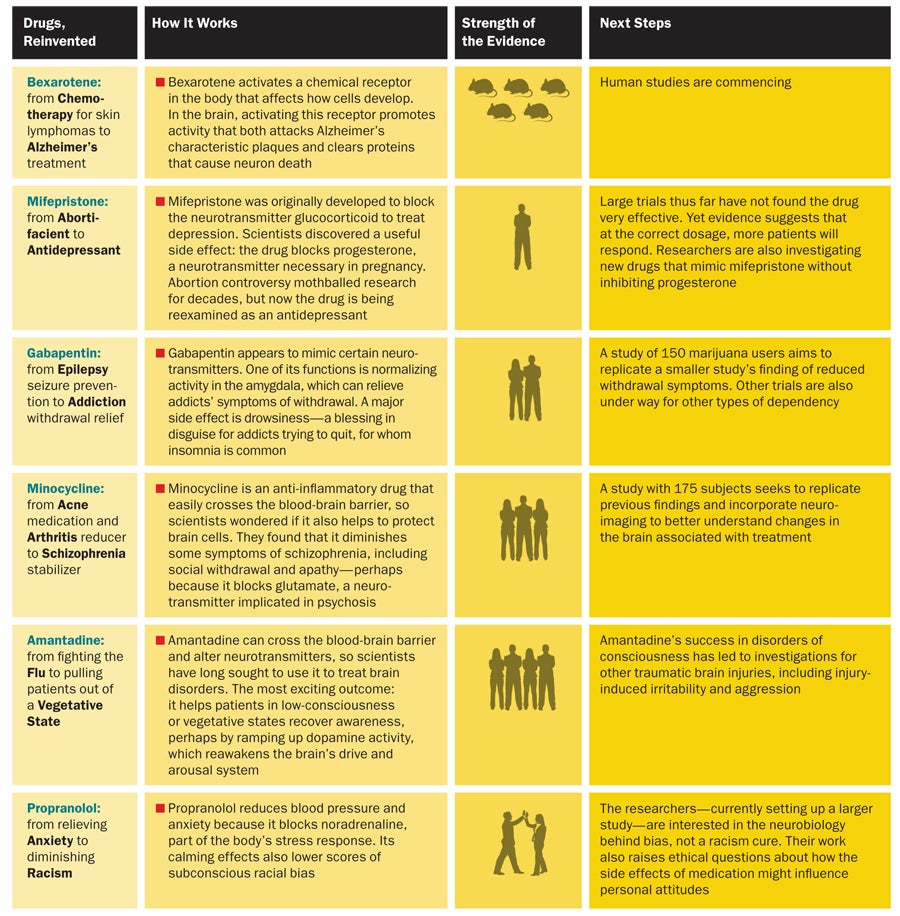On supporting science journalism
If you're enjoying this article, consider supporting our award-winning journalism by subscribing. By purchasing a subscription you are helping to ensure the future of impactful stories about the discoveries and ideas shaping our world today.
Developing new drugs is no easy feat. As much as 95 percent of new compounds fail along the path to becoming clinically available. Attrition is especially high for drugs treating the central nervous system. The ones that do succeed rack up an average cost of $1.8 billion. So researchers are increasingly turning to the bottles already on the shelf. Proved safe for human consumption and often understood at a molecular level, today's familiar pills might just be tomorrow's medical discovery. Sometimes one man's side effect is another man's cure.

iSTOCKPHOTO (people); SVETLANA ALYUK iStockphoto (mice)